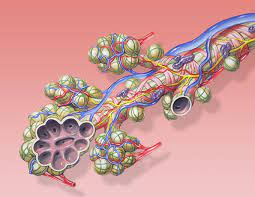The first two decades of this century were dominated by the microbe hunters.
These
hunters had tracked down one
after another of the microbes responsible for the most
dreaded scourges of many
centuries ; tuberculosis, cholera, diphtheria. But there remained
Line some terrible diseases for
which no microbe could be incriminated : scurvy, pellagra,
(5) rickets, beriberi. Then it was
discovered that these diseases were caused by the lack of
vitamins, a trace substance in
the diet. The diseases could be prevented or cured by
consuming foods that contained
the vitamins. And so in the decades of the 1920's and
1930's, nutrition became a
science and the vitamin hunters replaced the microbe hunters.
In the 1940's and 1950's, biochemists strived to learn why each of
the vitamins was
(10) essential for health. They
discovered that key enzymes in metabolism depend on one or
another of the vitamins as
coenzymes to perform the chemistry that provides cells with
energy for growth and function.
Now, these enzymes hunters occupied center stage.
You
are aware that the enzyme hunters have been replaced by a new breed of hunters
who are tracking genes ― the blueprints for each of the enzymes ― and are discovering
(15) the defective genes that cause
inherited diseases ― diabetes, cystic fibrosis.
These gene
hunters, or genetic engineers,
use recombinant DNA technology to identify and clone genes and introduce them
into bacterial cells and plants to create factories for the massive of
hormones and vaccines for medicine and for better crops for agriculture. Biotechnology has become a multibillion-dollar industry.
(20) In
view of the inexorable progress in science, we can expect that the gene hunters
will be replaced in the
spotlight. When and by whom? Which kind of hunter will dominate
the scene in the last decade of
our waning century and in the early decades of the next ?
I wonder whether the hunters
who will occupy the spotlight will be neurobiologists
who apply the techniques of the
enzyme and gene hunters to the functions of the brain.
(25) What to call them? The head
hunters. I will return to them later.
Questions
24. What is the main topic of
the passage?
(A) The microbe hunters
(B) The potential of genetic engineering
(C) The progress of modern medical research
(D) The discovery of enzymes
25. Which of the following can
be cured by a change in diet?
(A) Tuberculosis
(B) Cholera
(C) Cystic fibrosis
(D) Pellagra
26. How do vitamins influence
health?
(A) They are necessary for some enzymes to function.
(B) They protect the body from microbes.
(C) They keep food from spoiling.
(D) They are broken down by cells to produce energy.
27. In the third paragraph, the
author compares cells that have been
genetically altered by biotechnicians to
(A) gardens
(B) factories
(C) hunters
(D) spotlights
28. The phrase“occupy the
spotlight”in line 23 is closest in meaning to
(A) receive the most attention
(B) go the furthest
(C) conquer territory
(D) lighten the load
29. The author implies that the
most important medical research topic of the
future will be
(A) the functions of the brain
(B) inherited diseases
(C) the operation of vitamins
(D) the structure of genes
Please tally your answer with the below provided answers and
then comment here how much you got!
Answers
24.
C 25. D 26. A 27. B 28. A 29. A

Comments
Post a Comment